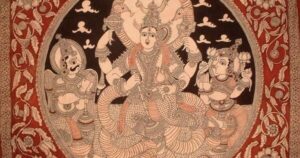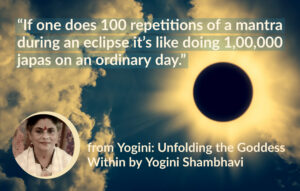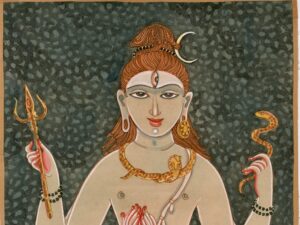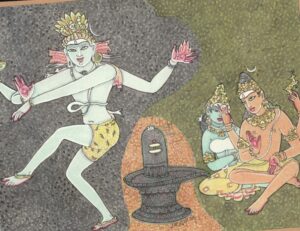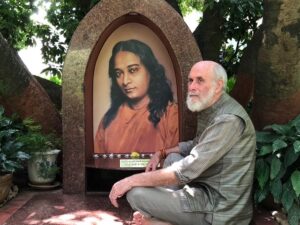Pratyahara Yoga
What is the main Yoga practice we can do for developing our psychological immunity, emotional calm, and inner equipoise in these difficult times? First, we must note that the principles and practices of Yoga overall are about mastery over the mind, so they all aid in psychological immunity, resilience, and the ability keep the mind from being dominated by external influences. Yoga in its deeper sense is a way to gain psychological wellbeing, without which any higher consciousness is not possible.
Yet one Yoga practice stands out as most important for improving psychological immunity and calming the senses and emotions. This is the practice of Pratyahara, the fifth of the eight limbs of Yoga that allows us to move into the inner Yoga practice of meditation by calming the outgoing mind and senses. It follows from Pranayama, in which the Prana is calmed and turned within. It precedes Dharana in which the mind is concentrated with an inner focus towards meditation.
Pratyahara is usually regarded as control of the senses, which is part of its field of concerns. Yet it is essentially the ability to turn our current of thought within, either aided by techniques or directly by the mind or by an awakened willpower. It involves being able to turn away from media stimulation and access our inner calm.
We must learn to use our senses in a contemplative and meditative manner, from the witnessing consciousness or Seer within. We can begin by appreciating the beauty and wonder of nature, and the nuances in nature’s formations from the ground to the sky. We can open our inner seeing and hearing, our powers of direct perception and deep listening. We can learn to hold our attention within, even when our minds are busy outwardly, by withdrawing from distraction.
Simple Pratyahara Methods
One simple and easy healing Pratyahara practice is to meditate upon the dark night sky full of stars, which soothes the eyes and expands the mind. Alternatively, we can gaze at a distant horizon during the day, whether an ocean, lake, mountain or sky. If these are not possible, we can contemplate the boundless space in our own minds, visualizing the vistas within us that we normally fail to recognize. Such visual practices help us restore our depth vision, apart from the two dimensional screens that make our minds superficial and reactive. When we have such depth vision and detached observation, we are capable of objective judgment, not simply emotional reactions. We see the whole and not just the part. We realize that life cannot be reduced to a formula or data base.
Another method is to visualize a sphere of golden light circulating around us, energized by the solar mantra Hreem, to bring light, intelligence and prana around us and ward off negative forces. This helps strengthen our pranic and mental energy fields, awakening our buddhi or inner intelligence. We can also use a dark blue light around us to create space, chanting OM Namah Shivaya!
Along with Pratyahara, we can hold our attention e at the third eye and Ajna chakra or in the spiritual heart (hridaya), gathering the mind and senses at these prime points of focus and unity. Such Dharana or concentration practices are the culmination and support for Pratyhara, as Pratyahara and Dharana always go together, closing the outer in order to focus on the inner. We should learn to direct our gaze at will steadily outwardly or inwardly.
We should establish a sacred space in our homes, a meditation or puja room, as a protective sphere for the mind beyond all outer disturbances. We can energize it with incense, oil lamps, flowers, sacred stones, yantras and murtis – or whatever strengthens our connection with the universal consciousness. Chanting mantras, bhajans, kirtans and stotras creates a musical Pratyahara to remove sensory disturbances from the mind and connect with the Nada or inner sounds that take us into the infinite. Meditating on these inner sounds is one of the main subtle methods of Pratyahara.
We should practice Pranayama to draw the prana down into the heart, the navel or the root chakra following the current of sound and nada. Pranayama functions to facilitate Pratyahara because the senses move along with the Prana and follow it within. Concentrating the Prana through slow deep breathing helps slow down and concentrate the mind and senses, giving them a higher Prana.
Deep sleep is our daily Pratyahara that allows our mind and prana to be renewed from within. It is essential for our physical and psychological wellbeing. Using mantra and meditation to facilitate deep sleep is part of this deeper Pratyahara of sleep that leads us into Yoga Nidra, yogic sleep and transcendence of body and mind. In yogic sleep we awaken to our boundless consciousness beyond ordinary waking, dream and deep sleep, finding inner peace and universal Shanti within.
Actually, we are always practicing Pratyahara of some sort as our senses and mind are selective. When we give our attention to one object we must withdraw it from all others. Yet most of the time we focus our mind and senses on stimulation, entertainment or distraction, not a pursuit of higher consciousness. We must learn to use this selective function of the mind with greater discernment of what is enduring versus what is transient.
Let practice the highest Pratyahara of seeing our Self in all beings and all beings in our Self. This is to embrace the universe and the Supreme Brahman within us! The highest Pratyahara is to return to this boundless peace that is the true nature of all. Om Shanti! Shanti! Shanti!
Vamadeva Shastri

